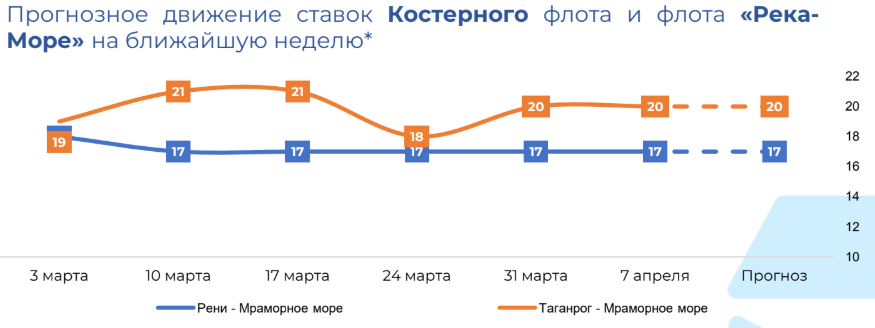The Black Sea remains under the influence of seasonal declines in business activity and an increasing supply of small-tonnage vessels. The end of Ramadan led to a reduction in the number of active market participants, further exacerbating the imbalance between available tonnage and transportation demand. Despite shipowners’ efforts to maintain current profitability levels, overall market sentiment remains cautious. There is an oversupply of open vessels, particularly along the western and central coastline. A slight increase in traffic from export ports has not had a significant impact on the market situation. Attempts to raise freight rates amid rising fuel prices have so far yielded limited results. Demand may pick up slightly next week, but without structural changes in cargo flows, freight rates will likely remain under pressure.
The Mediterranean Sea is experiencing a prolonged stagnation. This is mainly due to extended religious holidays and a lack of new freight inquiries. Shippers are in no hurry to enter the market, while vessel owners are trying to secure deals for the second half of April. A key argument for rate increases is the upcoming implementation of SECA regulations in May, which will lead to a switch to more expensive fuel. However, the absence of stable flows of fertilizers, grain, and construction materials limits opportunities to improve profitability. The oversupply of vessels continues to suppress rates. Attempts to secure medium-term contracts are met with caution from owners, who are wary of market instability. The outlook remains neutral — without new trade incentives, freight rates are unlikely to show significant growth in the near future.
The Azov Sea market remains sluggish. This is driven by religious holidays in the region and an increase in the number of available vessels following the end of the ice navigation season. Improved weather conditions have accelerated voyage turnover, leading to a sharp rise in open river tonnage. Market pressure is increasing, particularly on routes to northwestern Turkey and the Eastern Mediterranean. Shippers are expecting lower costs, while shipowners strive to maintain rate levels by offering later lay can dates. Weak export demand for grain, coal, and fertilizers continues to limit recovery prospects. Competition among vessels is intensifying, increasing the risk of idle time and making shipowners more vulnerable to disruptions in weather and port logistics. Given the current supply-demand balance, the regional outlook remains cautious — freight rates are likely to retain weak dynamics at least until the end of the month.

 +380 67 625 91 65
+380 67 625 91 65